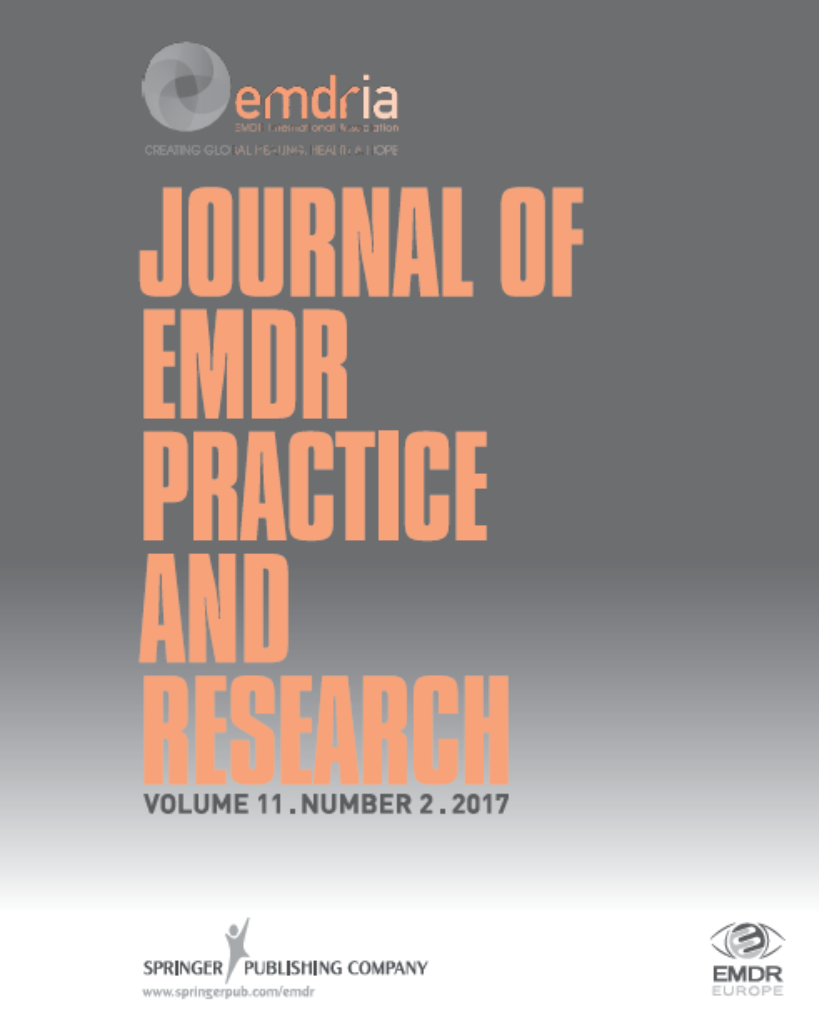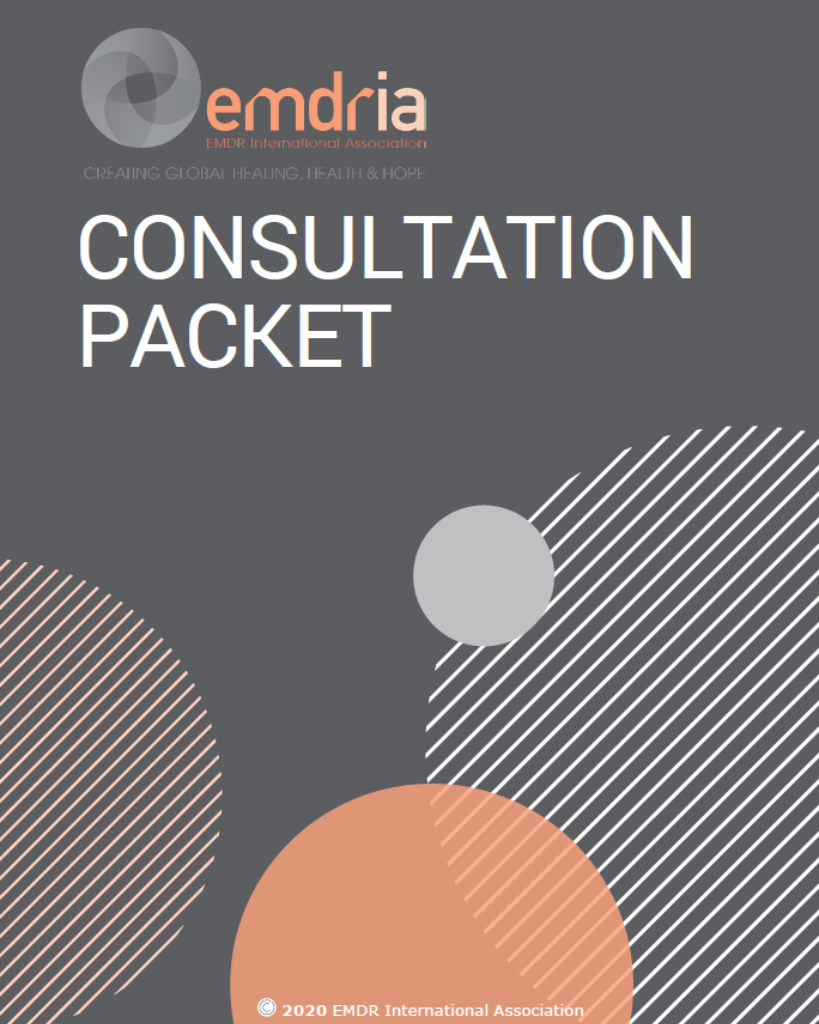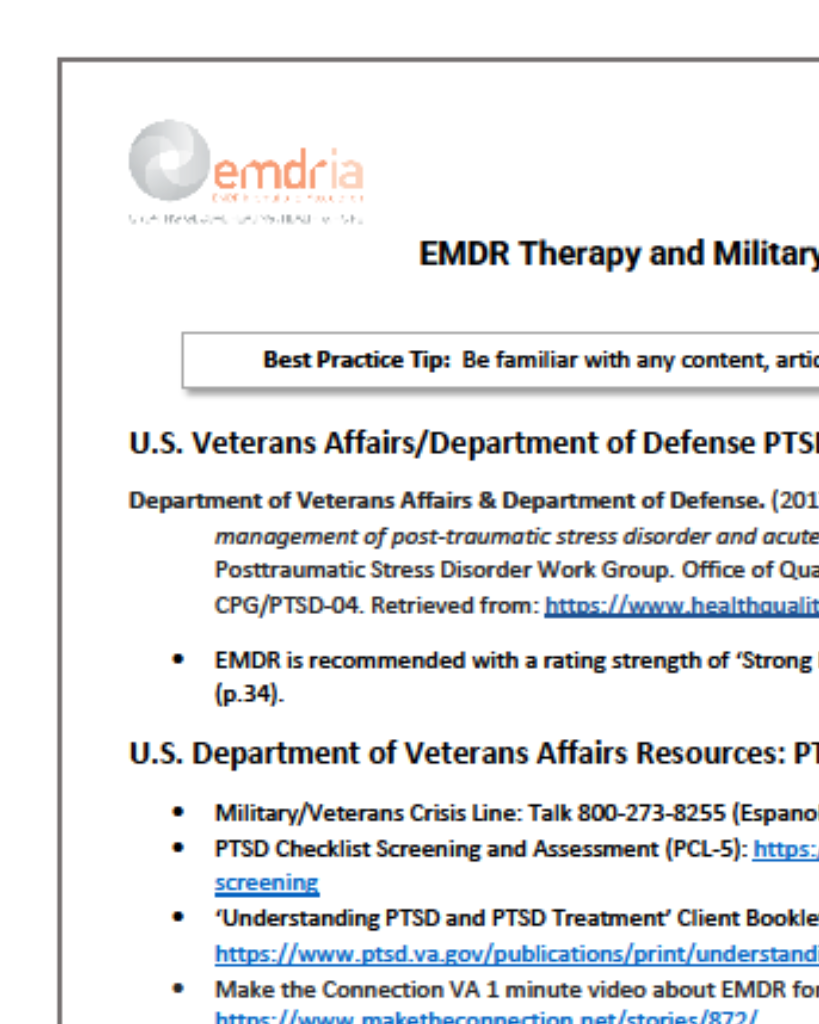What Is EMDR Therapy? Past, Present, and Future Directions
This position paper by Deany Laliotis, LCSW-C, LICSW, Marilyn Luber, Ph.D., Masaya Ichii, Karen Alter-Reid, Ph.D., and others is the result of a two-year project by the Council of Scholars’ “What is EMDR?” workgroup that was tasked with the particular challenge of defining EMDR therapy and proposes categories of EMDR therapy: EMDR psychotherapy, EMDR treatment protocols, and EMDR-derived techniques.
Article Abstract
“Since its inception in 1989, eye movement desensitization and reprocessing (EMDR) therapy has evolved from a simple desensitization technique to treat posttraumatic stress disorder to a comprehensive psychotherapy approach that treats a broad range of clinical problems in a variety of contexts and with diverse populations. This position paper is the result of a two-year project by the Council of Scholars’ “What is EMDR?” workgroup that was tasked with the particular challenge of defining EMDR therapy, as innovations in the field continue to develop and the need for a consensus definition has become essential. In addition to proposing categories of EMDR therapy, that is, EMDR psychotherapy, EMDR treatment protocols, and EMDR-derived techniques, we identified core elements of EMDR therapy that can serve as a guideline to evaluate future innovations. Additionally, with concepts and procedures evolving over the years, some of the language needed revising to be consistent with current practices. The adoption of these three categories of treatment by the EMDR community would have broad-reaching implications that would generate more qualitative as well as quantitative studies in all categories. For training and clinical practice, it offers clinicians the opportunity to train with a focus on their particular treatment setting in addition to the foundational training that would be universal to all EMDR-trained clinicians. Finally, the interplay in the Council of Scholars between the “What is EMDR?” workgroup and the research, clinical practice, and training and accreditation workgroups will lead to further developments as these areas all inform one another.”
—Description from publisher
Article Access
Laliotis, D., Luber, M., Oren, U., Shapiro, E., Ichii, M., Hase, M., La Rosa, L., Alter-Reid, K., St. Jammes, J. T. (2021). What Is EMDR Therapy? Past, Present, and Future Directions. Journal of EMDR Practice and Research, 15(4), 186–201. https://doi.org/10.1891/EMDR-D-21-00029
About the Journal
The Journal of EMDR Practice and Research is a peer-reviewed publication devoted to integrative, state-of-the-art papers about Eye Movement Desensitization and Reprocessing. It is a broadly conceived interdisciplinary journal that stimulates and communicates research and theory about EMDR, and their application to clinical practice. The Journal of EMDR Practice and Research is the Official Publication of the EMDR International Association.
Date
December 1, 2021
Creator(s)
Deany Laliotis, Marilyn Luber, Udi Oren
Contributor(s)
Elan Shapiro, Masaya Ichii, Michael Hase, Lisa La Rosa, Karen Alter-Reid, Juliane Tortes St. Jammes
Practice & Methods
History of EMDR
Extent
16 pages
Publisher
Springer Publishing Company
Rights
Copyright © 2021 EMDR International Association
APA Citation
Laliotis, D., Luber, M., Oren, U., Shapiro, E., Ichii, M., Hase, M., La Rosa, L., Alter-Reid, K., St. Jammes, J. T. (2021). What Is EMDR Therapy? Past, Present, and Future Directions. Journal of EMDR Practice and Research, 15(4), 186–201. https://doi.org/10.1891/EMDR-D-21-00029
Series
15
Installment
4
Audience
EMDR Therapists
Language
English
Content Type
Peer-Reviewed
Original Source
Journal of EMDR Practice and Research
Access Type
Open Access





